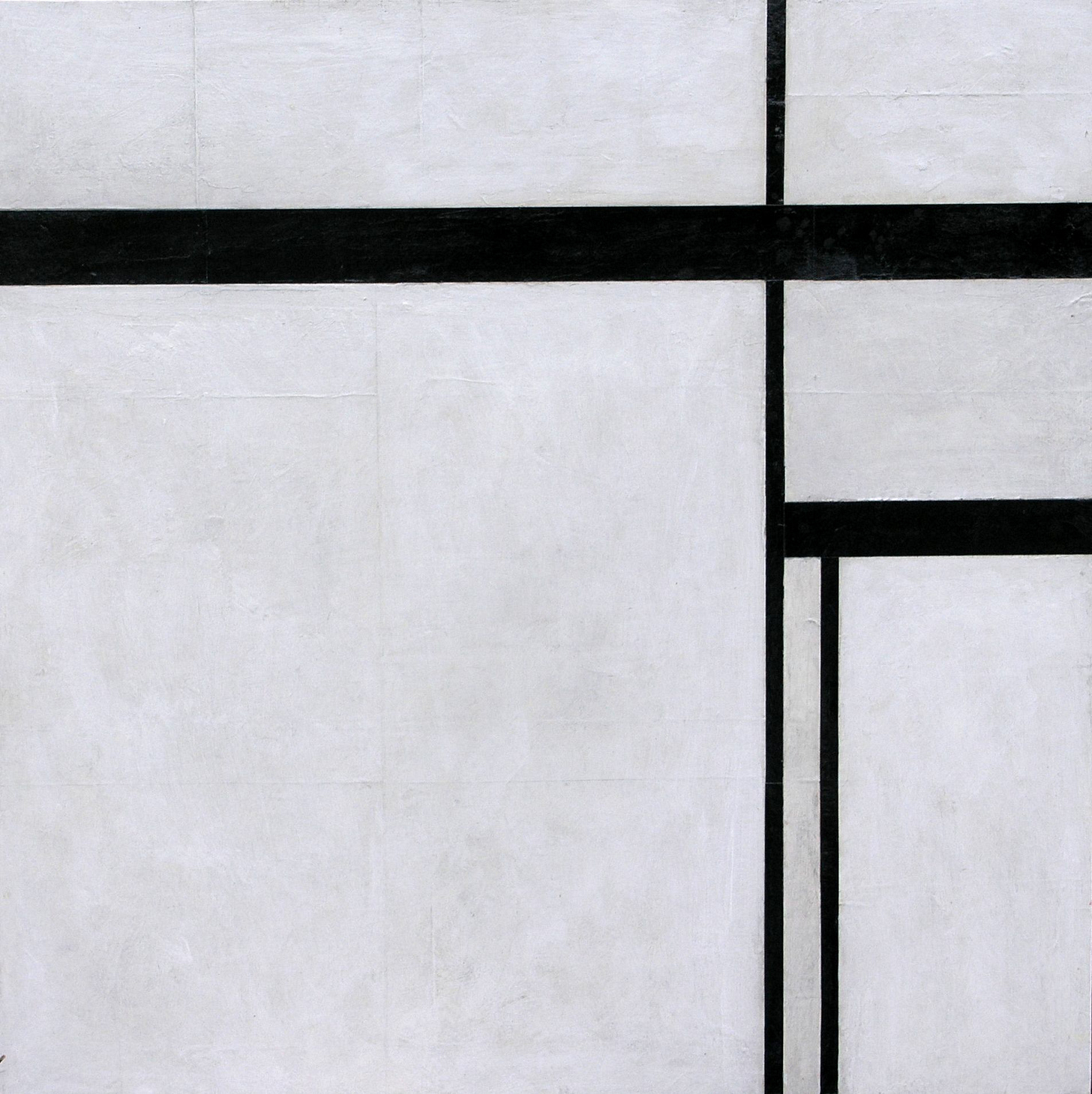Patch the Fourth Wall – New Gallery, Houston, Texas - June 2 – July 7, 2007
Artist statement for the exhibition
Patch the Fourth Wall – New Gallery, Houston - June 2 – July 7, 2007
All of the works presented in this show were selected for their relationship to fundamental experiments in abstraction and non-objectivity as developed originally by the Dutch artists Piet Mondrian, Theo van Doesburg and Georges Vantongerloo. In many ways my work falls under the category of post-minimalism in that I responded to minimalism in my youth by going backwards to the roots of minimalist art where the artist’s hand is still present.
When we consider the nature of the enquiry presented by Minimalist and Post Minimalist art, we find it has more to do with the quality and type of experience a person has when engaged in the making or viewing of art than with the object being created or experienced. The object serves its purpose by carrying the exact message of itself and nothing more than that. By so doing the viewer has an opportunity to have a pure experience of seeing unencumbered by the need to read meanings into the object.
By a process of careful exclusion the artist constructs his work to be completely and only itself as a flower or a rock or a mound of dirt is itself — it is not the messenger or representative of some other thing nor serves some other purpose. It is merely itself.
Once the conceptual ground has been cleared and there is only the thing; minimal, singular, alone, so that the artist and viewer alike are forced by this encounter with starkness to confront the ontological basis of the object and to clear their mind of all else, then the stage is set to rebuild the object from this knowledge of the object’s concrete reality.
It is in this way — through this sever ontological argument — that all vestiges of previous art dialogs have been purged and all of art history flattened into this single present moment of experience with the art object.
With such a sever discipline there then follows play and also revolt.
For some this play has been to abandon the object altogether and focus the attention on the mental sphere and the conceptuality that precipitates from it. But this leads primarily to the inevitable tendency for the accumulation of more and more layers of simulacrum.
Others revolt and pretend this work either didn’t happen or that it was a futile and now obsolete exercise. But perhaps they do not revolt. Perhaps they just have not yet arrived at this spiritual threshold of purification that minimalism is. When the confusion of excess and accumulation becomes overwhelming, that is each person’s first step.
Consciousness, that precious state of cognition, is the main thing to achieve and protect and the more clear and lucid one’s consciousness the better. This clarity is achieved through perspicuous expression with simplicity and strait forwardness being hallmarks of such expression.
A minimalist art object is fixed in place in its plasticity, its concreteness. Being about itself, it downplays expressionistic tendencies of the artist and remains non-representational and non-objective. These qualities allow for the object to be appreciated to the degree that the viewer can appreciate such things. A minimalist object encourages quietude, subtlety of mind and a meditative state in which a non-verbal response is key.
These works in and of themselves are not really about any sort of dialog and yet, exactly for that reason and the fact that we are so driven by language, much dialog ensues. It is a kind of irony but one that is only relieved by stopping and just looking. JUST looking. That’s the point: focused observation with a quiet mind.
Perhaps the articulate viewer can reconstitute some of his experience into language but again, this is not the point.
This is what places minimal art in an ever vulnerable position. As soon as people do not understand the process and goal of looking at this kind of art, the art itself becomes — in the mind — an incomprehensible enigma.
It seems a mistake to take the idea of the minimal and try to take it to a technological perfection; to a machine perfection devoid of humanity as did many of the minimalists. This type of purification only leads to a clinical, sterile and dead emptiness.
Human perfection is of another sort. It has an inherent living quality about it that penetrates into the physical world from the world of spirit. The quest for human perfection reconciles the tragedy of physical limitation in quest of the spiritual. This is where the idea of the heroic comes from; the flag on top of the mountain, overcoming limitation rather than succumbing to it. In our quest for artistic excellence — that thing that gives satisfaction — we must learn to rest short of extinction and reside in our humanity. A quest for order that does not embrace chaos and change causes the mind to merely become unconscious. The point of artistic endeavor is to be alive, awake and aware.



